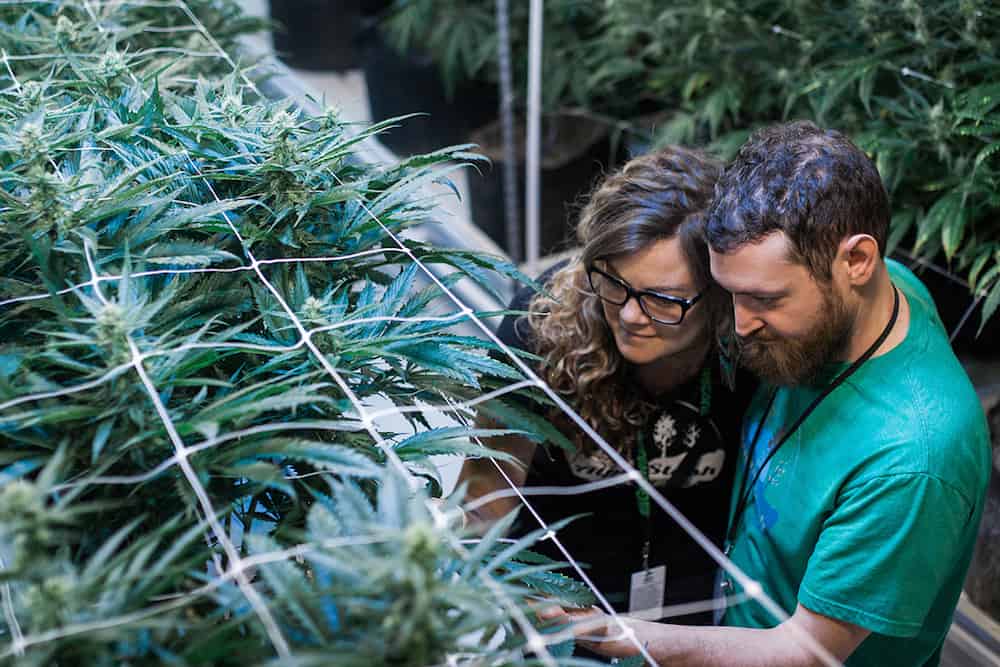
In 2003, when Colorado craft cannabis farmer Danny Sloat was 21 years old, he woke up with terrible stomach pains that landed him in the hospital for four days and no diagnosis.
“They gave me Vicodin,” he shared. “That was in September, and by June of the next year I was needing time-released patches at 150 micrograms an hour, 24 hours a day, or 3.4 milligrams total in a day; with 600 micrograms a day of Fentanyl candy lollipops needed for break-through pain.”
Sloat said at the height of his Fentanyl use he was up to 5.6 milligrams a day – more than twice the lethal dose.
“I went through a slew of other medications and ended up on OxyContin and Oxycodone, because the muscle pain gets worse on Fentanyl” he continued. “I was sleeping 16 hours a day on my right side—like I was in a coma. I believe this caused a nerve impingement condition called Thoracic Outlet Syndrome.“
According to the Mayo Clinic, Thoracic Outlet Syndrome (TOS) is a group of disorders that occur when blood vessels and/or nerves in the space between the collarbone and the first rib—comprising the thoracic outlet—are compressed, causing pain in shoulders and neck, with numbness in fingers.
After all was said and done, the final diagnosis was actually a combination of auto-immune issues, including hyper-active immune disorder, asthma, colitis, and chronic muscle inflammation.
“Turns out a high dose of Tagamet could have helped me in the first place, as it calms down the immune system,” he shared. “But, without a diagnosis, in order to quell the pain, I became addicted to these heavy-duty pain killers.”
Sloat was also diagnosed with Acoustic neuroma, a non-cancerous tumor in his inner ear, or auditory nerve, affecting his hearing. To remove it a surgeon cut his valence nerve, with the other side of his brain compensating.
“I was in an emotional and spiritual funk, and a few surgeries really hadn’t cleared it up,” he said. “My dad was the one who suggested I try cannabis, since it was legal in Colorado. He was a drug defense attorney in Boulder and Aspen. My dad helped start NORML in Colorado, and was open to cannabis as a medicine.”
With his family physician at a loss as to how to help him any further, he was advised to go to rehab to get off the pain-killers, as he was wasting away before their eyes.
“The doctors didn’t know what to do, they knew the pain meds weren’t working, and saw my behavior changing,” he said. “I didn’t feel rehab was an option because I was in so much pain. But, I went to a medical marijuana doc, paid the fee and got a medical card.”
Though he received the card in September, he didn’t visit a dispensary until November.
“I was dragging my feet, hesitant, as I had not had good experiences with cannabis in my teens—it made me feel paranoid,” he continued. “A childhood friend who smoked weed encouraged me to go. My first visit was to Dr. Reefer, a dispensary in a basement where the guy lived upstairs. I bought a plastic baggie of weed with the name of the cultivar written on the bag with a Sharpie. A lot has changed since then.”
Sloat said he bought maybe a gram each of flower of the cultivars, AK-47 and Mango.
“My friend had a pipe and I smoked a little,” he shared. “It was relaxing and fun—and helped with the pain. We were watching a movie on TV and it helped me get into the show and out of my head and the pain. My depression lifted. That was the first relief I’d felt in years—and I didn’t get paranoid.”
With the help of cannabis, Sloat knew he had a chance to get his life back together and get off the drugs.
“I weaned myself off of all the meds completely in about three to four months,” he continued. “That was in 2010. Cannabis provided a space to physically and spiritually feel better, and I began to take less and less of the medications, and started to ingest at night.”
The edible he took at night was called “the black-out cookie”; he doesn’t recall how much THC was in it. At that time there were no labeling ordinances. Today, he said he doesn’t ingest edibles daily, but when he does, he likes to micro-dose with 2.5 milligrams of gummies, dosed with 1:1 THC/CBD. He also enjoys smoking his own favorite cultivars daily.

Needless to say, the experience created a new life and career, as he immediately was compelled to become a cannabis farmer, but not just any cannabis farmer—he eventually became a craft cannabis farmer, under the shingle, AlpinStash, with his wife, Kristin Murr, otherwise known as “Murr.”
Their operation is a vertically integrated, stand-alone farm encompassing 3,000 square feet, with 2,000 square feet of canopy. Cultivars include Lemmiwinks, by Exotic Genetix, crossed with Crouching Tiger/Hidden Alien, and White Rhino by Nirvanna, a Dutch seed company.
“Colorado is big on craft spirits—growing small batch flower is really the same thing. Where would beer be if not for the home brews?” he asked. “No craft beer company is competing against home brew, it’s not a contest.”
Planting the world for the greater good is something he shares with his wife and team.
“Our passion is to produce the highest quality product, otherwise it’s just a job,” he mused. “Being a craft cannabis farmer is a labor of love, it’s not an easy path. We are exactly the opposite of a commercial grow with a corporate mentality. Our goal is to become financially stable growing the best flower around for the greater good – not become millionaires.”
The post From Opioids to Organic Farming: Danny Murr-Sloat, Co-Founder of AlpinStash appeared first on High Times.


Comments
Comments are disabled for this post.